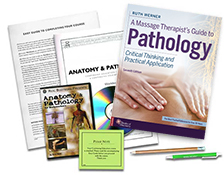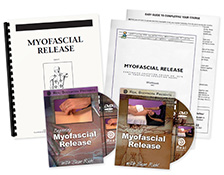Whether caused by excessive heat, electricity or corrosive chemicals, severe burns can cause enormous physical and emotional pain. Aside from the patient’s experience, treating and rehabilitating tissue that has suffered a third-degree burn is one of the toughest challenges the medical community faces. Although some recoil at the thought of having their burns touched and many people fear touching burned skin, research has consistently shown that massage therapy plays a valuable therapeutic role in burn rehabilitation.
Burn Classification
According to the severity of tissue damage, burns are generally categorized into one of the following:
- First-Degree – Causing pain and redness, this type of burn only affects the epidermis.
- Second-Degree – Causing pain, redness and blisters that may ooze, this type of burn extends below the epidermis to the dermis.
- Third-Degree – This severe type of burn involves all layers of the skin and may also damage the underlying bones, muscles and tendons. The burn site appears pale, charred or leathery and there is generally no sensation in the area because the nerve endings are destroyed.
Addressing Severe Burns
Burn treatment depends upon the extent of tissue damage, the burn’s cause and the presence of infection. In order to reduce the risk of infection, dehydration and other potentially serious complications, all burns surpassing first-degree require immediate medical attention.
Third-degree burns generally require hospital admittance where the affected area can be kept clean, dead tissue removed and skin grafts performed. The process of burn rehabilitation may take many years and can be accompanied by a great deal of pain and anxiety.
- Pain – Known as debridement, removing dead, burned tissue is usually an extremely painful experience. By using one of several methods to clean and remove burned tissue, debridement helps promote healing. Despite the use of medications and anesthesia to help people endure debridement, the pain is usually excruciating when the drugs wear off. In addition to debridement, other surgeries and procedures unique to burn rehabilitation are known to cause pain.
- Anxiety – Many severe burn survivors suffer from extreme anxiety. While fear of touch typically develops in reaction to the initial trauma, it is easily compounded with repeated, painful surgeries and procedures. Additionally, the change in physical appearance caused by severe burns lead some to feel like societal outcasts. The texture and appearance of severely burned skin can be frightening to those who have never witnessed third-degree burns. The general public’s fear of people with severe burns contributes to the social anxiety that often plagues survivors.
While pain and anxiety are the most prominent issues during burn recovery, itching, edema, loss of sensation and depression are also very common.
Why Massage?
Massage therapy is a valuable therapeutic complement to burn rehabilitation for several reasons. Over the years, several studies have suggested that massage therapy can reduce burn-related pain, itching and anxiety – both from the burn itself and during the healing of wounds.
- According to research published in the October 2005 edition of Dermatologic Clinics, children in a burn trauma unit who received 30-minute massages before debridement or dressing change were more relaxed during the procedure.
- According to research published in the May/June 2000 edition of The Journal of Burn Care and Rehabilitation, burn patients who received a 30-minute massage to a closed, moderate-sized scar tissue area twice a week for five weeks had dramatically less itching, pain and anxiety, and improved mood than those in the control group.
- According to research published in the May/June 1998 edition of The Journal of Burn Care and Rehabilitation, burn debridement sessions were less painful after massage therapy. The researchers concluded that massage likely reduced debridement pain, because the sessions lessened anxiety, anger and depression.
- According to a study published in the January 2008 edition of Journal of Bodywork and Movement Therapies, children receiving massage on post-burn tissue had greater range of motion and elevation of mood than those who did not receive massage therapy.
A Little Guidance
While massage therapy can help reduce anxiety, increase blood flow and diffuse localized edema, there is another important reason for using it therapeutically for burn rehabilitation. In the August/September 2005 edition of Massage and Bodywork, massage therapist and burn survivor Jennifer Hartley explains that the most important result of burn scar massage is “…simply the reintegration of touch into the lives of people who now shun human contact.”
Based on this interview with Hartley, some suggestions for massage therapists interested in working with this population, include:
- Visit a burn center to witness the reality of the survivor’s experience.
- Collaborate with a local burn surgeon or burn unit for client referrals.
- Use only gentle energy work such as Reiki or Therapeutic Touch on healthy skin during the initial stages of burn treatment – and stop if the work elicits any discomfort.
- Use positive imagery to describe what is felt under the therapist’s fingertips to replace images burn survivors have of their burned skin.
- Once the burn has healed completely, myofascial release can unwind myofascial restrictions to increase range of motion, reduce lymphatic swelling and bring sensation back to a previously numb area.
Working with burn survivors is not a path for everybody. In addition to having compassion and being dedicated to helping those who have gone through the ordeal of a third-degree burn, there is a lot to learn about the emotional and physical repercussions of severe burn recovery. Because bodywork can boost body image, improve comfort levels with touch, reduce anxiety, minimize pain and increase circulation to diminish itching, numbness and edema, massage therapists who choose to work in burn rehabilitation can truly make a difference in their clients’ lives.
More Information:
Burns: Massage Benefits and Precautions













